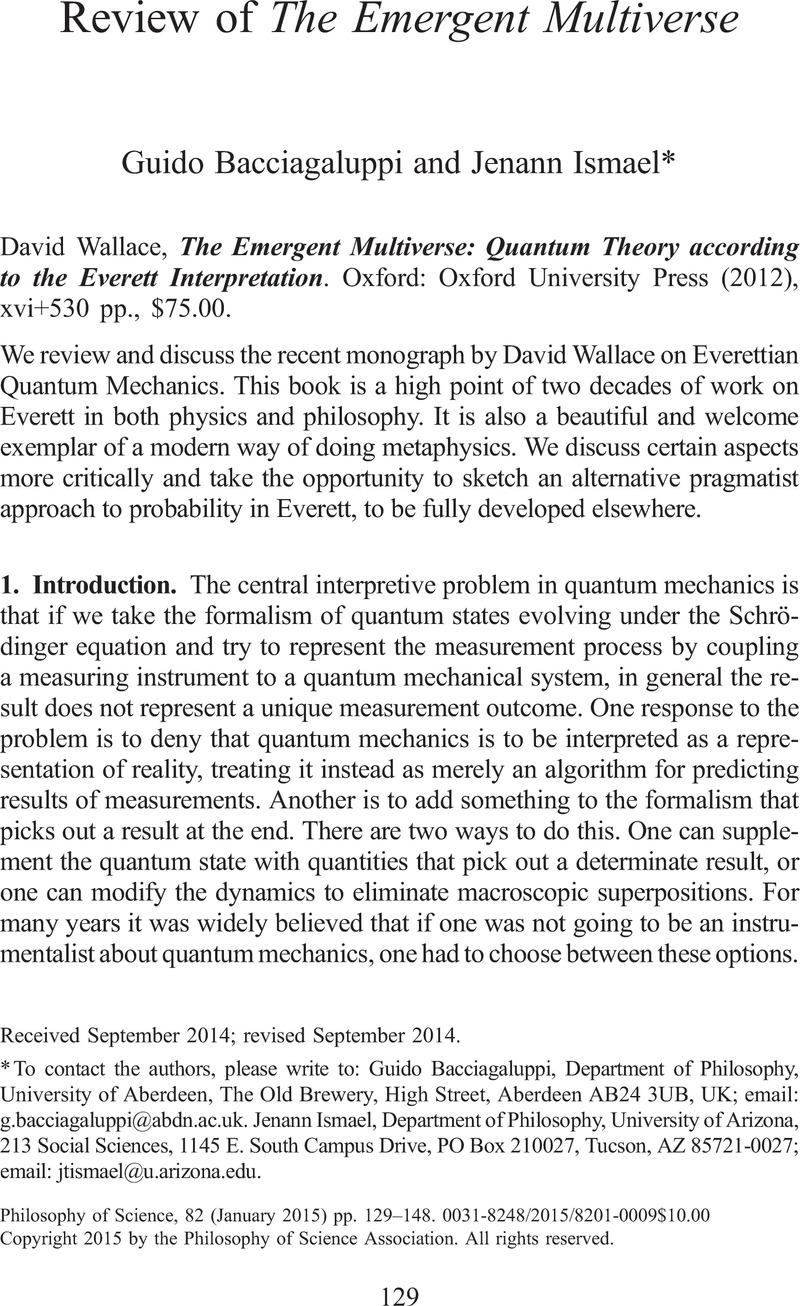Crossref Citations
This article has been cited by the following publications. This list is generated based on data provided by Crossref.
Brown, Harvey R.
and
Porath, Gal Ben
2020.
Quantum, Probability, Logic.
p.
165.
French, Steven
2020.
Phenomenological Approaches to Physics.
Vol. 429,
Issue. ,
p.
205.
Bacciagaluppi, Guido
2020.
Quantum mechanics, emergence, and decisions.
Mind & Society,
Vol. 19,
Issue. 2,
p.
299.
Miller, Ryan
2023.
Chemical reduction and quantum interpretation: A case for thomistic emergence.
Foundations of Chemistry,
Vol. 25,
Issue. 3,
p.
405.





